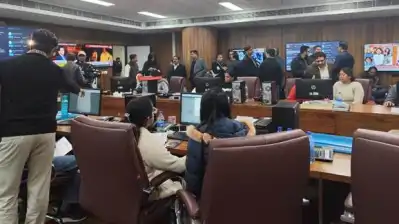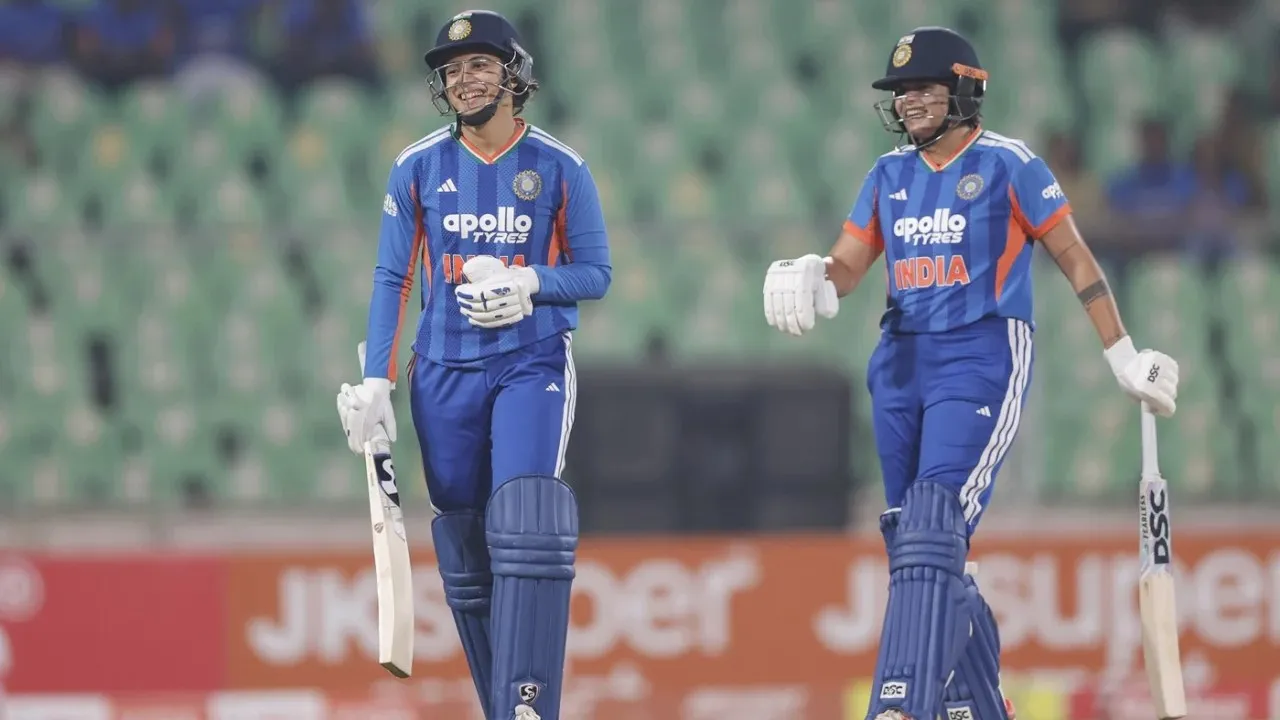

Smriti Mandhana and Shafali Verma power India to massive total
Indian openers Smriti Mandhana and Shafali Verma delivered a masterclass in aggressive batting as India Women secured a commanding 30-run victory over Sri Lanka Women in the 4th T20I on Sunday. The high-scoring encounter at Thiruvananthapuram showcased India's batting depth and clinical bowling under pressure.
Mandhana and Shafali Unleash Batting Firepower
Batting first, the Indian side posted a formidable total of 221/2 in their allotted 20 overs. The foundation was laid by a record-breaking opening stand between Smriti Mandhana and Shafali Verma. Mandhana played a sophisticated yet explosive knock, scoring 80 runs off just 48 deliveries, decorated with 11 boundaries and 3 sixes. Her partner, Shafali Verma, was equally devastating, smashing 79 runs from 46 balls. Their partnership of 162 runs effectively batted the visitors out of the game before the first wicket fell in the 16th over.
Late Flourish and Finishing Touches
Following the departure of the openers, Richa Ghosh took the mantle to ensure the momentum didn't drop. Ghosh remained unbeaten on 40 from a mere 16 balls, striking at a staggering rate of 250. Captain Harmanpreet Kaur added a quick 16 to push the total past the 220-run mark, leaving Sri Lanka with a mountain to climb.
Sri Lankan Resistance Falls Short
Chasing a target of 222, Sri Lanka showed significant intent early on. Captain Chamari Athapaththu led from the front with a valiant 52 off 37 balls, supported by Hasini Perera's 33. However, the scoreboard pressure eventually took its toll. Despite several batters getting starts, the visitors could only manage 191/6 in their 20 overs.
Bowling Excellence Clinches the Match
India’s bowling unit remained disciplined despite the flat deck. Vaishnavi Sharma was the standout performer with the ball, picking up 2 wickets for just 24 runs in her 4-over spell. Arundhati Reddy also claimed two scalps, ensuring the IND Women vs SL Women clash ended in favor of the "Women in Blue." With this win, India continues to demonstrate their dominance in the T20 format as they prepare for upcoming international challenges.